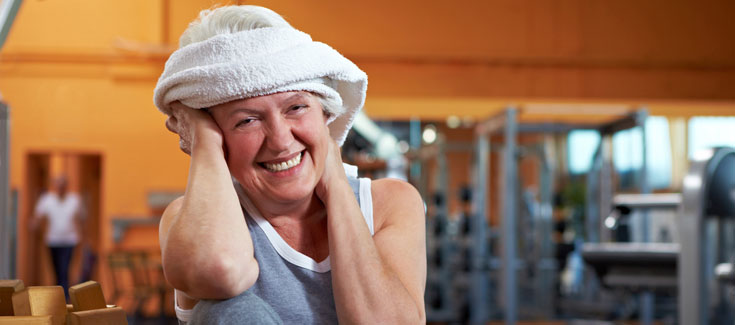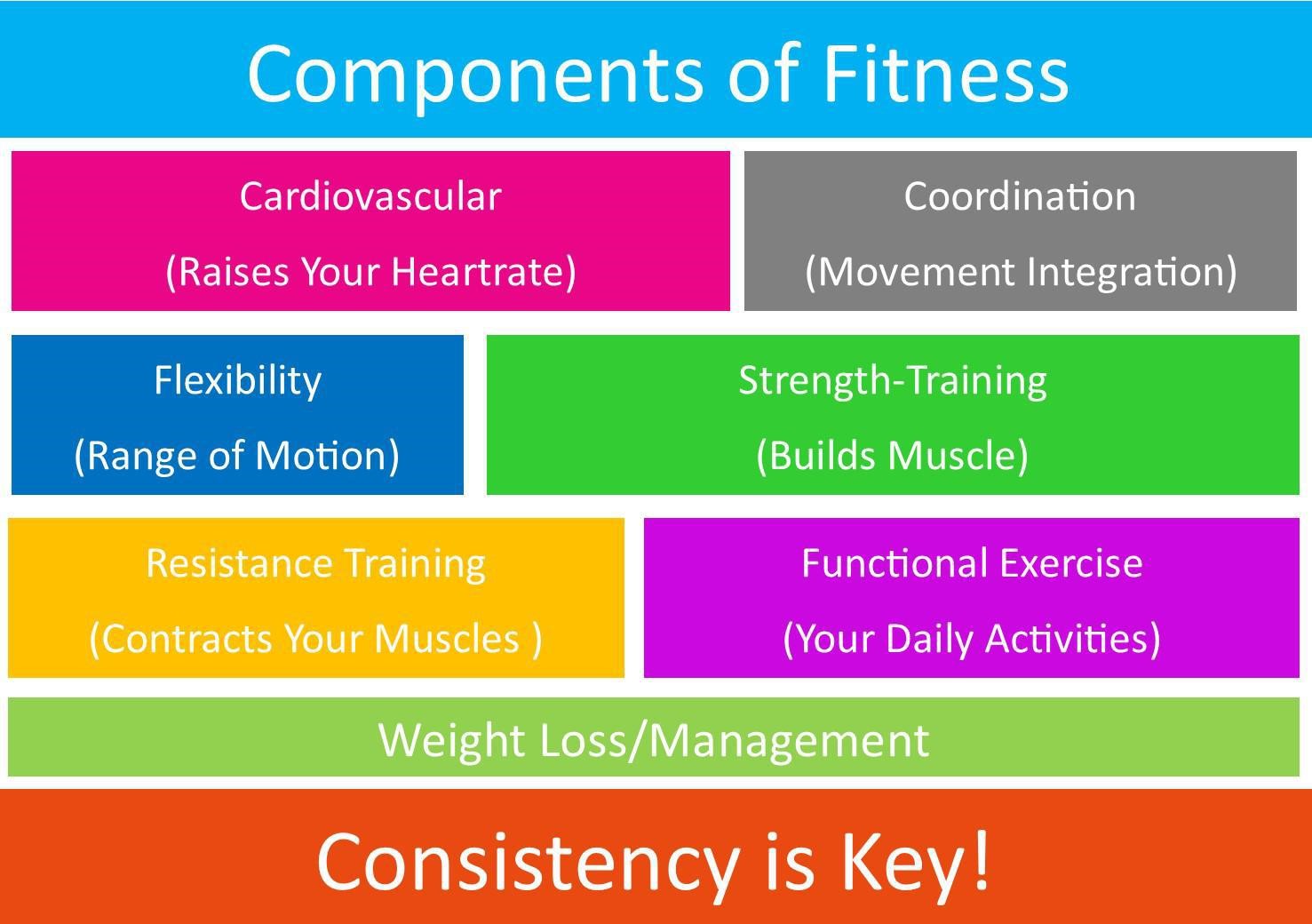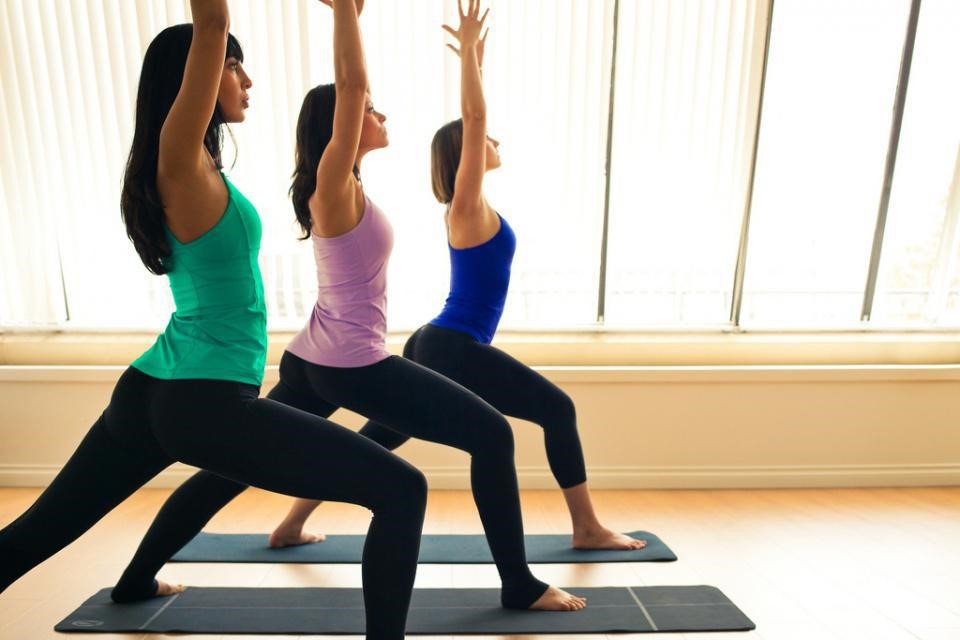Get Your Year Started Right!

Originally posted February 12, 2016
Get Your Year Started Right! A lecture by Travis Moore, PT, DPT
Missed our lecture? Don’t worry! Catch up with us on our “In Case You Missed It” blog!
We’ve all heard “new year, new you” and watched as our local gyms crowd with a surge of resolution-makers that tapper off by February but at Lafayette Physical Therapy we want to help you make it a lifelong habit!
In a lecture lead by Wellness Services Coordinator, Travis Moore, PT, DPT we learned about the key components to a well-rounded and effective exercise program to keep our fitness and wellness resolutions.

Cardiovascular Exercise vs. Muscle-Building Exercise

Both are beneficial to our overall health, but muscle-building exercise is the key to sustaining long-term metabolic vigor.
You need both cardiovascular and strength training to keep your metabolism burning strong. To improve our metabolism we need to “feed the fire” with balanced nutrition and exercise. Cardiovascular exercise can be likened to the kindling our metabolism needs to burn calories. “Cardio” is when we perform exercises that increases our heartrate such as running and swimming. But it is muscle-building exercises such as strength-training, with or without weights, that allows for the long-burning logs of metabolism that we need to effectively manage and maintain weight. Muscle mass burns energy even when we’re not active and therefore is an essential component to weight management.
Functional and Strengthening Exercises
Functional and strengthening exercises enable us to better perform cardiovascular and muscle-building activities.
For life-long sustainability, adding functional and strengthening exercises to our routines is vital to health and maintaining our independence. A good indicator of this is our ability to rise and stand from the floor, which can become difficult and even life-threatening as we age. Exercises such as walking uphill, stairs, and simply rising from a chair unassisted can help strengthen quadriceps and glutes which are key to independence.
Flexibility and Mobility

Flexibility and mobility is vital to our functional movement and overall strength.
Adding flexibility and mobility training allows us to use the full extent of our body’s capabilities. No matter how strong you are, you will be limited if your range of motion is restricted. For example, if you cannot raise your arm over your head, lifting weights wouldn’t help you overcome this limitation and may cause uneven movements that can lead to injury and fatigue. Performing Pilates- or yoga-based exercises can help to strength muscles while improving functional movement and flexibility.
Bone-Strengthening Exercises
Our bone health faces increased risks as we age, these risks can be combatted with resistance training. Resistance training consists of exercises that allow the muscle to pull on the bone. Weight-bearing exercise such as walking uphill, squats and adding speed to regular activities like climbing stairs can strengthen your bones. Remember moderation is best when increasing speed or activity.
Pain and Decline
Pain is often a contributing factor to degeneration in our functional movement and overall strength. A decline or cessation of activity can cause weakness, pain (or more pain), compensation that can lead to bigger problems, and can even shut down muscles on a neurological level. All of these factors can affect our balance, coordination, strength, and overall functionality. It is possible that if you already have pain you may have to work through it tactfully to reach your goals and improve your health.
When to work through the pain and when to stop:
- If pain is low, dull and decreases with activityit may be okay to work through it gently.
- If pain is sharp and increases with activityyou should not work through it. Working through it may worsen your state and cause further weakness in the process. It is best to seek medical attention when pain is consistently at this level or increases.
- If you are unsure, it is best to check with a medical professional such as physician or physical therapist.

Think of the Tin Man in the Wizard of Oz, stiff and creaky, he constantly needed oil to loosen his joints; luckily for us, movement is our oil! The more we move and strengthen the more we combat stiffness and pain. There are four components of exercise that can help you to work through pain and prevent future issues:
- Mobility training– Exercise that addresses range of motion include Pilates- or yoga-based, or specific exercises prescribed by your physical therapist that strengthen or stretch while improving overall movement and flexibility.
- Coordination – “How we move” can have a big impact on performance, strength, pain and long-term independence. Dancing, sports or even playing ping-pong are great ways improve coordination.
- Movement– Simply get moving, every bit helps! Oiling our joints with movement keeps our body happy and healthy.
- Weight Loss/Management– A healthy weight allows us to move easier, decreases risks for heart disease, diabetes, and pain. If appropriate, weight loss helps alleviate pressure on our joints and can revitalize our energy levels.
It is important to perform a variety of exercises that include cardiovascular, muscle-building, and functional- and strength-training in our routines, but the most important component of exercise is performing our programs consistently.
Consistently performing a well-rounded program allows us to utilize our body’s potential, helps to eliminate aches and pain and allows us to remain independent.
Questions to ask yourself for sustainable health:
-What areas do you need to address?
-What are you willing to do to address these areas?
-How will you find out what you need?
-Make goals and go!
Ready to kick start your health, but don’t know where to begin?
At Lafayette Physical Therapy, we have debuted our Annual Fitness Evaluation! Allow a qualified clinician to help you better understand your current fitness level and identify areas you would like to improve. We offer three levels of packages with additional boosters to optimize your fitness that include personal training, AlterG®Anti-Gravity Treadmill® independent training sessions, and nutritional consulting with Cynthia Allen, RN of The Nutrition RN. Please call of Front Desk at (925) 284-6150 or stop by our office for more information!
Lecture and Information Provided by Travis Moore, PT, DPT Wellness Services Coordinator
Arranged and Edited by Julia Slater, BA Community Outreach Coordinator
Disclaimer
This article is intended as general health information and is not intended to provide individual specific medical advice, professional diagnosis, opinion, treatment or services to you or any other individual. Please consult your doctor or a medical professional before starting or changing a fitness or nutrition program.
